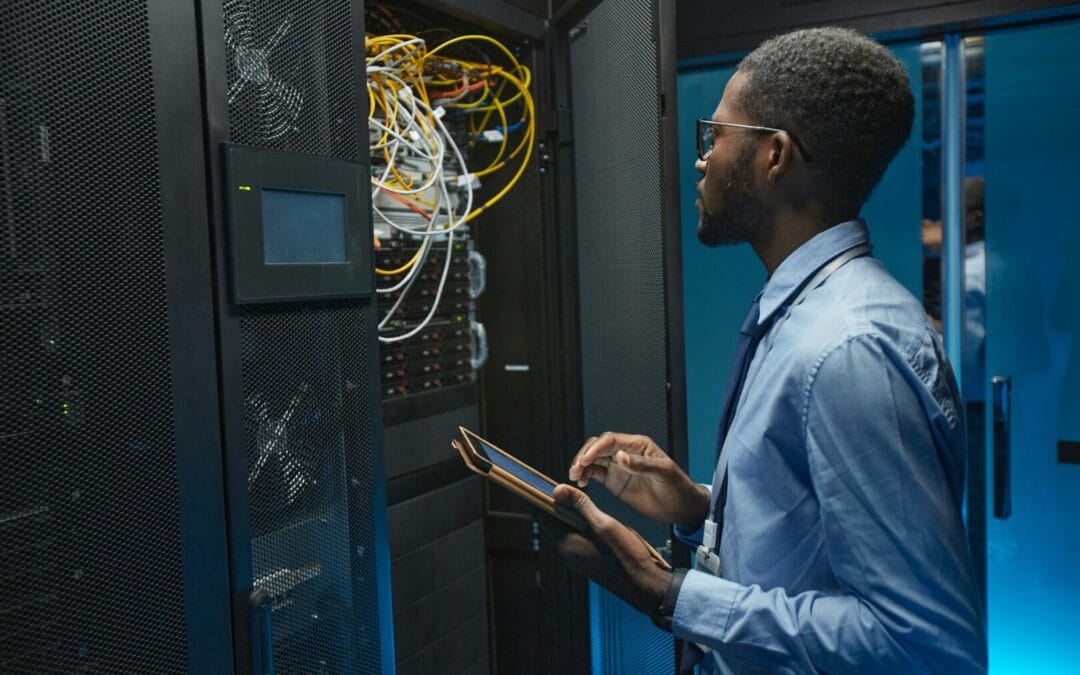When dealing with corporate networks, getting the hardware installation right is like building a house on a strong foundation. It’s essential for keeping everything running smoothly, from computers and phones to complex server setups. When there’s a bump in the road, though, these systems can hit a snag, making everyone’s day a bit more challenging. A minor misstep in installation can lead to big headaches later on.
Consider the everyday office setup, for instance. You’ve got a new set of routers and switches, all shiny and promising to speed up work. But one loose connection or a slightly outdated setup, and suddenly, everyone’s waiting for that email to load. These errors don’t just slow things down; they can throw off the whole day’s workflow. With a little attention to detail during installation, these issues can often be avoided.
Common Hardware Installation Errors
Running into hardware installation errors happens more often than we’d like to admit. Many issues stem from common mistakes that are easy to overlook. Here are some typical errors:
– Incorrect Device Configurations: It’s like giving a wrong address to GPS; your network devices need proper settings to communicate effectively. Whether it’s not setting up IP addresses correctly or mismatched configurations across devices, these hiccups can disrupt network operations.
– Loose Connections: Anyone who’s tripped over a cable knows this problem well. Even a slightly unplugged cable can break the flow of data, causing communication errors and downtime.
– Outdated Firmware: Think of this as using an old map in a fast-changing city. Firmware needs updates to handle new tasks efficiently. Neglecting these updates can result in performance issues or security vulnerabilities.
– Power Supply Issues: Just as your phone needs enough charge to function, network devices must receive adequate power. Power failures or incorrect power configurations can halt operations entirely.
Recognizing the cause of these errors is the first step in tackling them. Armed with some basic understanding and careful checks, many of these problems can be fixed before they escalate into larger issues. Ensuring every device is properly set up and connections are secure keeps the network running smoothly and effectively.
Identifying and Diagnosing Hardware Installation Errors
Recognizing and diagnosing hardware problems in a corporate network setting is like being a detective. With the right clues, you can quickly pinpoint what’s going wrong. Initial diagnostics often involve a series of straightforward steps. Start by checking the visible connections and configurations. Are all the cables neatly plugged in? Are the devices powered on? A simple visual inspection can catch many issues before they become bigger problems.
Next, pay close attention to error messages or warning lights on network devices. These signals act like breadcrumbs, leading you to the source of the problem. Listen for uncommon sounds in servers or other hardware, like grinding or persistent buzzing, which might indicate mechanical issues. Also, use network management software tools to help spot inconsistencies in performance that could hint at deeper issues.
Sometimes, the signs are sneaky and harder to detect. Watch for irregular network behavior, such as intermittent connections or unexplained slowdowns. These can be symptoms of misinstalled hardware. Routine checks and keeping a close eye on device performance help catch problems early, preventing them from causing extended downtime.
Steps to Correct Hardware Installation Errors
Once you have identified the problem, correcting hardware installation errors requires a systematic approach. Here’s a simple guide to follow:
1. Review the Setup Manual: Always begin by referring to the manufacturer’s instructions. This ensures you’re not missing any step that’s critical to the hardware functioning properly.
2. Update Firmware and Drivers: Make sure all firmware and drivers are current. Many issues arise from running old versions that are incompatible with newer system requirements.
3. Reconfigure Device Settings: Check and adjust device configurations so they align with the network’s needs. Adjust IP addresses or subnet masks if they’re incorrectly set.
4. Secure Connections: Double-check all physical connections. Firmly plug in cables and make sure they’re not too tight to avoid damage.
5. Perform Network Tests: Run diagnostics again to ensure that all issues have been resolved after making adjustments. Testing helps confirm that repairs are effective.
Taking these steps helps bring your network back on track, avoiding unnecessary delays. Careful attention to detail during these fixes often reveals surprising efficiencies that enhance overall network performance.
Preventing Future Hardware Installation Errors
Preventing errors is often easier and less costly than fixing them. Regular maintenance plays a critical role in avoiding hardware installation mishaps. Schedule routine checks and updates. Technical health checks ensure everything stays in good working order.
Consult with experts when installing new equipment. Professionals have the know-how to spot potential issues and configure devices correctly the first time. Keeping a dedicated team or having reliable support boosts confidence that your network is in capable hands.
Maintaining a well-documented setup also aids prevention. By having detailed records of device configurations and setup procedures, troubleshooting becomes quicker and more precise. This documentation allows anyone setting up or fixing hardware to have a clear picture of how everything is supposed to fit together.
By taking these steps, you’re establishing a robust and dependable network environment, ready to support your business endeavors without unnecessary interruptions. Ensuring smooth operations comes down to staying proactive and informed, turning potential pitfalls into just another part of the learning curve.
Ensuring Smooth Network Operations with Professional Help
Hiring professional technicians for hardware installation and network management offers significant advantages. Professionals bring expertise, saving time and preventing costly mistakes. In Massachusetts, ASCIO Wireless stands out, offering expert services to keep your systems efficient and reliable.
Keep Your Network Running Smoothly
Proper hardware installation and regular maintenance are key to network efficiency. Consider professional assistance to avoid pitfalls and maintain seamless operations.
Ensuring seamless network operations means staying ahead of potential issues and making improvements as needed. If you’re looking to bolster your corporate network in Massachusetts with reliable installation services, ASCIO Wireless offers the expertise you need. Visit our hardware installation page to learn more about how our experienced technicians can help keep your systems running smoothly and effectively.

